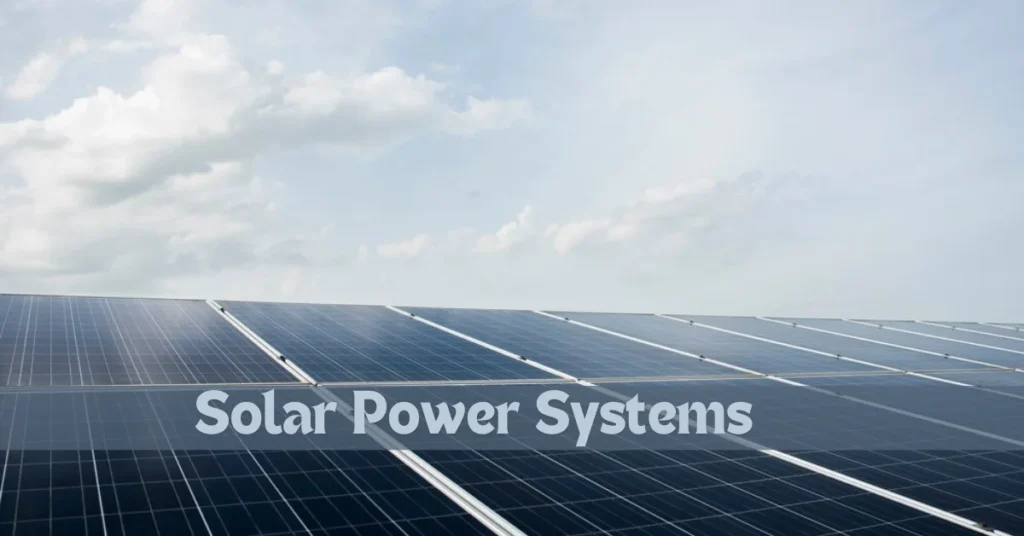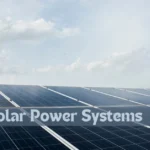Introduction to Inverters
In recent years, solar energy has emerged as a leading solution for sustainable living. As more homeowners and businesses turn to renewable resources, understanding how these systems work is essential. At the heart of every solar power system lies a crucial component: the inverter.
These unassuming devices play a pivotal role in converting sunlight into usable electricity. Without them, even the most advanced solar panels would be ineffective. If you’re looking to harness the sun’s energy efficiently, grasping the function of inverters is key to optimizing your solar power experience.
Join us as we delve deeper into this vital piece of technology that transforms our approach to clean energy and helps pave the way for a greener future!
Types of Inverters
When it comes to solar power systems, understanding the different types of inverters is crucial. The most common are string inverters. These work by linking together multiple solar panels in a series. They are cost-effective and easy to install.
Then there are microinverters, which operate independently for each panel. This allows for better energy production, especially if some panels receive more sunlight than others.
Power optimizers offer a middle ground between these two types. They improve energy harvest while still relying on a central inverter for conversion.
Hybrid inverters combine battery storage with grid connection capabilities. This versatility enables users to store excess energy generated during peak sun hours for later use.
Each type serves unique needs within solar power systems, catering to varying installation conditions and user preferences.
Importance of Inverters in Solar Power Systems
Inverters play a crucial role in solar power systems, transforming the energy generated by solar panels into a usable format. Without them, the direct current (DC) produced by solar cells would remain unfit for household use, which typically requires alternating current (AC).
They also enhance system efficiency. By optimizing how electricity is converted and distributed, inverters ensure that you get the most out of your solar investment. This can lead to significant savings on energy bills.
Moreover, modern inverters come equipped with advanced features like monitoring capabilities. Homeowners can track their energy production and consumption in real-time, providing valuable insights into performance.
Safety cannot be overlooked either. Inverters have built-in safeguards that protect both your home and the grid from electrical faults. This safety net is essential for any reliable renewable energy setup.
How Inverters Work in a Solar Power System
In a solar power system, inverters play a pivotal role by converting direct current (DC) generated by solar panels into alternating current (AC). This transformation is essential since most household appliances operate on AC.
When sunlight hits the solar panels, they produce DC electricity. The inverter then steps in to change this form of energy. It ensures that the voltage is suitable for home use or can be fed back into the grid.
Modern inverters are equipped with advanced features. They monitor energy production and enhance efficiency through maximum power point tracking (MPPT). This technology allows them to extract optimal power from solar arrays under varying conditions.
Additionally, safety mechanisms within inverters protect both the equipment and users. They disconnect during outages or malfunctions, ensuring reliability throughout their operation.
Choosing the Right Inverter for Your Solar System
Selecting the right inverter for your solar power system can significantly impact its efficiency. Start by assessing your energy needs. Calculate the total wattage of all appliances running simultaneously. This will help you determine how much capacity your inverter must handle.
Next, consider the types available. String inverters are common but may not be ideal if shading is a concern. Microinverters offer individual panel optimization and can enhance overall performance.
Efficiency ratings matter too. Look for inverters with high conversion rates to maximize output from your solar panels.
Don’t forget about warranties and customer support options when making a choice. A good warranty indicates reliability, while responsive customer service is invaluable during troubleshooting or maintenance.
Think about future expansion possibilities as you grow more reliant on solar energy over time. Choose an inverter that allows room for additional panels down the line without compromising functionality.
Maintenance and Troubleshooting Tips for Inverters
Regular maintenance is key to keeping your inverter running smoothly. Start by inspecting the unit for any signs of damage or wear. Look for loose connections, corrosion, and dirt buildup.
Cleaning your inverter is crucial. Dust can accumulate on vents and fans, leading to overheating. Use a soft brush or cloth to gently remove debris without causing harm.
Monitor performance closely. Keep an eye on error codes displayed on the screen. Familiarize yourself with common issues like voltage fluctuations or system shutdowns.
If you experience problems, consult your user manual first. It often contains troubleshooting steps tailored to your model.
Consider reaching out to a professional if you’re unsure about repairs. Regular check-ups from qualified technicians can extend the lifespan of your inverter significantly and ensure that it operates at peak efficiency throughout its life cycle.
Future Advancements in Inverter Technology
The future of inverter technology is bright and innovative. Researchers are focusing on enhancing efficiency, aiming for greater energy conversion rates that could minimize losses in solar power systems.
One exciting development is the integration of artificial intelligence. Smart inverters can adapt to changing conditions, optimizing performance based on weather patterns and electricity demand. This means more reliable energy output.
Another area of advancement involves microinverters and power optimizers. These devices offer individualized panel monitoring, allowing for better management of each module’s performance within a larger system.
Furthermore, advancements in materials science promise lighter, more durable components. This will not only ease installation but also extend the lifespan of solar power systems.
As renewable energy becomes increasingly essential globally, these innovations will play a crucial role in making solar energy even more accessible and efficient for everyone.
Conclusion
Inverters play a crucial role in the efficiency and effectiveness of solar power systems. They are the unsung heroes that convert solar energy into usable electricity for our homes and businesses. Understanding their importance, types, and functionality can empower you to make informed decisions when it comes to solar investments.
Choosing the right inverter is essential for optimizing your system’s performance. Regular maintenance ensures long-lasting benefits from your solar setup while keeping an eye on future advancements allows you to stay ahead of the curve.
As technology evolves, so too will inverters, leading us towards more efficient energy solutions. Embracing these innovations means we’re taking significant steps toward sustainable living and reducing our carbon footprint. It’s exciting to think about how far we’ve come—and where we’re headed—in harnessing clean energy through effective solar power systems.
FAQs
Q: How do solar power systems work?
Ans: Solar power systems convert sunlight into electricity using photovoltaic cells, supplying clean energy to homes or businesses.
Q: What are the main components of a solar power system?
Ans: A solar power system typically includes solar panels, an inverter, a battery for storage, and a monitoring system.
Q: Are solar power systems effective in cloudy weather?
Ans: Yes, solar panels still generate energy in cloudy conditions, though at reduced efficiency compared to sunny days.
Q: How long do solar power systems last?
Ans: Most solar panels are designed to last 25–30 years, with regular maintenance ensuring optimal performance over time.
Q: What are the financial benefits of installing solar power?
Ans: Solar power can reduce electricity bills, increase property value, and qualify for tax credits or incentives in many areas.







